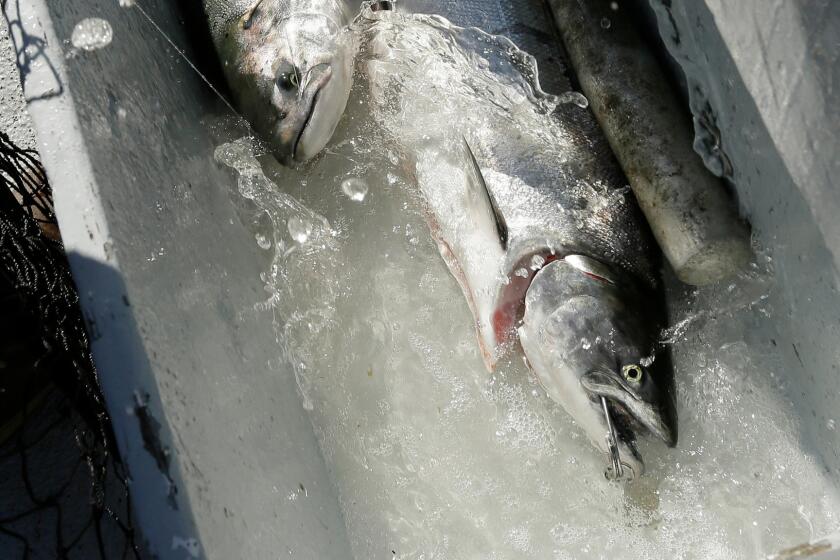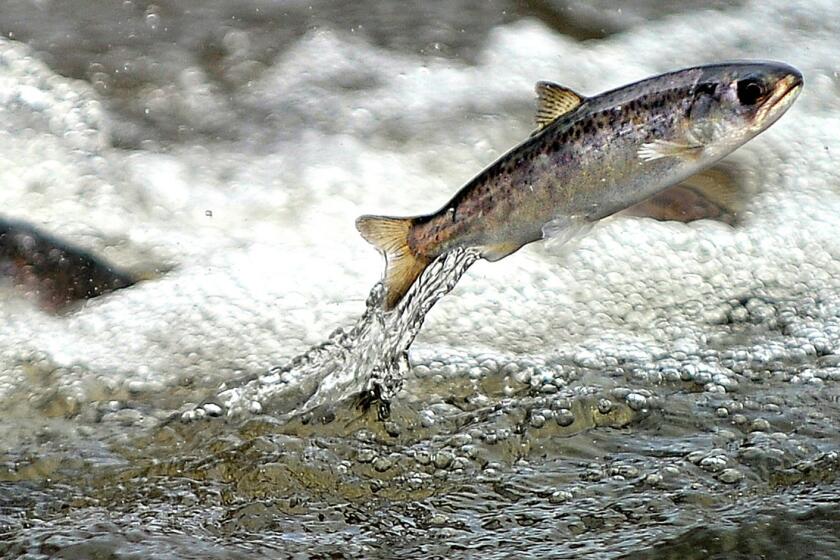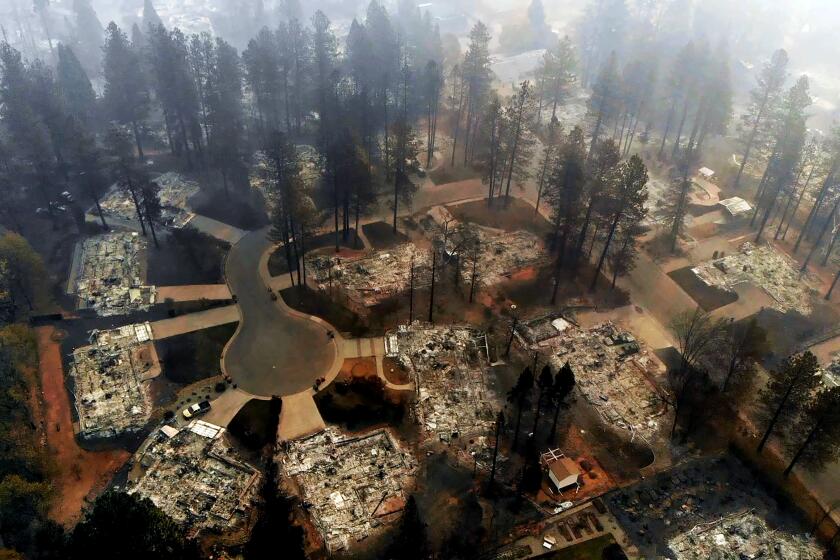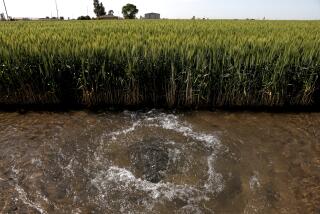Editorial: Newsom’s drought order amid wet winter threatens iconic California species
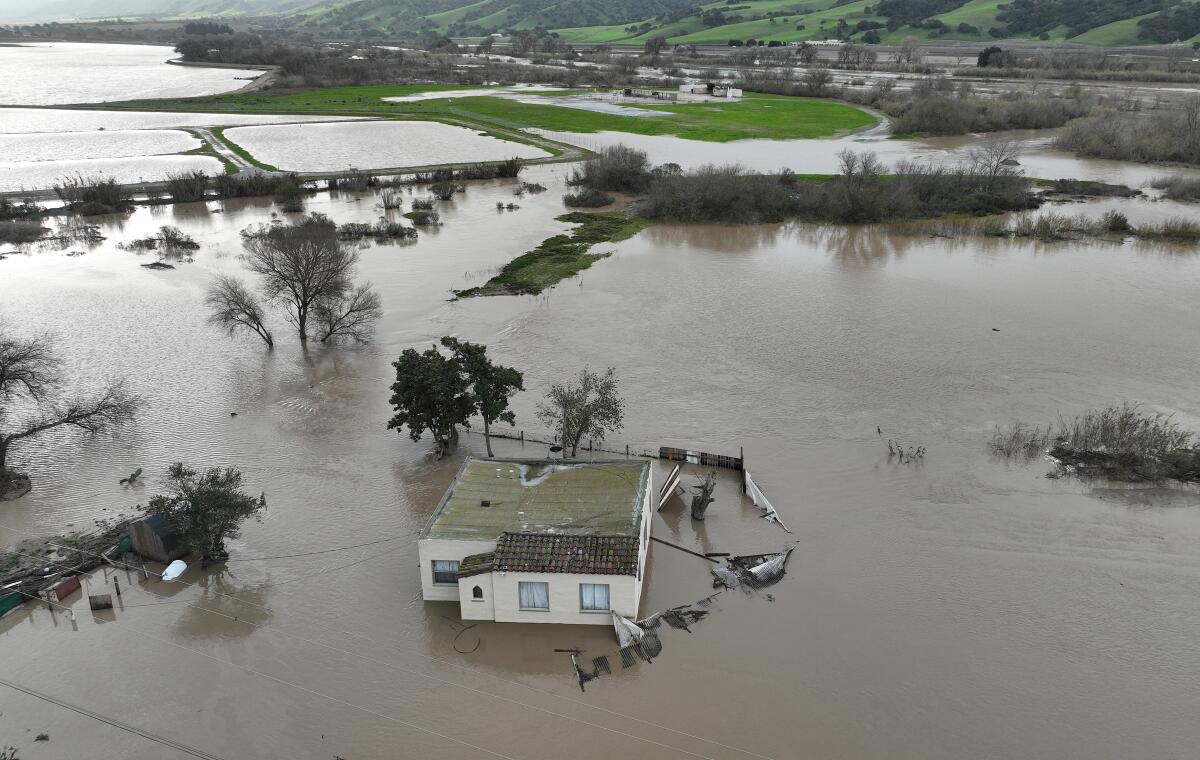
Chinook salmon can’t swim in atmospheric rivers.
The iconic migratory California fish need actual rivers — the ones that run through the landscape, carrying juvenile salmon downstream in the Sacramento-San Joaquin River system, through the delta, past the powerful pumps that divert water to aqueducts for agricultural and residential use, across the San Francisco Bay and into the Pacific Ocean.
The fish live in the Pacific for several years and grow enough flesh and fat to battle their way back upriver to spawn, so their young can renew the cycle — if there’s enough water for the journey.
California is still recovering from a parade of atmospheric rivers that slammed the state just after Christmas and kept coming through much of January. It became the wettest three-week period in the state’s recorded history. As the snow melts and reservoirs are gradually tapped, there ought to be plenty of water flowing downstream for salmon. That’s a good thing for the endangered species whose numbers have declined shockingly over the last decade, and that could, if we’re not extremely careful, go extinct in our lifetimes.
So it’s troubling that Gov. Gavin Newsom signed an order Monday that in effect could suspend environmental protections as though this were another critically dry year, with every drop needed for basic human health and safety. That means curtailing water releases from reservoirs that otherwise would be required by law to keep water in the rivers to sustain the salmon and other threatened species.
California is not merely a political jurisdiction drawn on a map.
For agriculture, it’s a wet year — the state will deliver from 30% to 100% of water allotted to agricultural agencies in the Sacramento and San Joaquin valleys. For the salmon — and the animals on land and in the ocean that live off them, not to mention California’s commercial and sport fishing fleet — the order could make it as if the atmospheric rivers never came.
Should we worry about a bunch of fish? Absolutely. Even if they weren’t an important link in our environmental chain and our economy — and they are — migrating Chinook salmon are one of the state’s natural wonders and should no more be allowed to disappear from our our landscape than giant sequoias or monarch butterflies. Residents of a city that recently hosted a 6,000-person memorial service at the Greek Theatre for a mountain lion surely understand this.
We build freeway bridges to protect mountain lions from traffic, wrap sequoias in foil to protect them from wildfire and cross our fingers for the butterflies. With the salmon, all we need to do is follow the law as written and keep the water flowing downstream when we have it. Instead we keep them on the brink to sustain the unsustainable — crops like almonds and pistachios that can’t be fallowed (unlike, say, tomatoes, kale or broccoli) during dry years.
Water management decisions being made right now are at least as much to blame as heat storms and drought.
It has become standard practice for San Joaquin Valley farmers and the elected officials who represent them to complain that any drop of water that flows to the Pacific rather than diverted to farm fields is “wasted.” It was a charge gleefully adopted by Donald Trump when he was president and he sidelined the scientists whose reports determine how much water must flow through the delta to sustain endangered species.
It was remarkable how quickly that same idea was embraced by drought-weary urban Californians during the onslaught of atmospheric rivers a few weeks ago. All that wasted water running out to sea. Can’t we capture it?
Certainly, we can do a much better job of diverting rainwater and allowing it to soak into the ground for later consumption. But to keep the increasingly dry state from becoming a wasteland, we also need to allow enough water to flow to the sea.
If ‘drought’ means a period of dry years followed by a return to the norm, California is not in drought. The current climate is the norm.
In recent years, as the reservoirs ran low and the streams ran dry, California Chinook salmon and other species that depend on moving water moved closer to extinction. Meanwhile, the footprint of thirsty farmland devoted to growing almonds expanded by an area four times the size of San Francisco. How do we define “waste”?
Newsom officials note, correctly, that amid a changing climate we may still be in the midst of drought. They argue the order is necessary to maintain adequate reserves, not just for crops but also for our showers, toilets and kitchens (but please, not for lawns). That’s especially true given the similar squeeze we’re getting from the drying-up Colorado River.
And they’re right that we may still be in drought despite the December and January storms, but we also need to keep California’s rivers alive, and the fish that live in them. It’s a test case for a warmer, drier era. If the fish don’t survive it, we probably won’t either.
More to Read
A cure for the common opinion
Get thought-provoking perspectives with our weekly newsletter.
You may occasionally receive promotional content from the Los Angeles Times.
